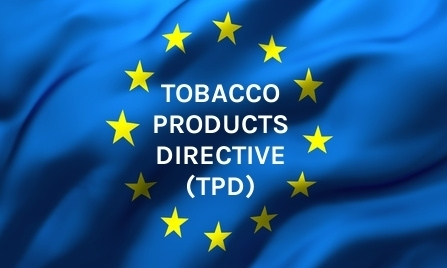
The European Commission (EC) proposed an update to the 2011 EU Tobacco Excise Directive (TED) in December 2022, the first of which is: In addition to significantly increasing excise taxes on cigarettes and heated tobacco products, the draft requires a EU-wide minimum excise tax on e-cigarettes.
Minimum GST: Any minimum tax levied is a floor, not a ceiling. In other words, individual EU member states are free to impose higher taxes, but not lower).
~~~~~~Introduce~~~~~~~

Currently, more than half of the 27 EU member states have some kind of tax on e-cigarettes. Germany is the largest and richest EU member state and the country that recently approved a tax on e-cigarette products. Its tax of €0.16 per milliliter (to gradually increase to €0.32 by 2026) came into effect in July 2022.
Each EU member state taxes e-cigarettes and HTP products at its own rate, and the proposed legislation would harmonize the fragmented EU market and rapidly reduce smoking rates across the EU.
1. Propose to increase the minimum consumption tax on tobacco
According to the proposal, the current minimum excise tax rate for cigarettes in the EU is €1.80 ($1.92), which should be increased to €3.60 per pack of 20 cigarettes. This would double excise taxes in member states like Luxembourg and Austria, which have lower cigarette taxes (in Eastern European countries, a pack of cigarettes currently sells for less than €3). And the EU will impose a minimum excise tax of 55% on heated tobacco products. The EU hopes to generate an additional €9.3 billion in revenue through tax harmonization, which would be a welcome windfall for member states hit by the pandemic and inflation.
2. Propose to levy a minimum consumption tax on electronic cigarettes
The nicotine content limit for EU e-liquids is 20 mg per milliliter. Under the draft proposal, e-cigarettes with less than 15 milligrams of nicotine per milliliter of liquid would be subject to a 20% excise tax, while stronger products would be subject to a tariff of at least 40%. Heated tobacco products (HTP) will be subject to a 55% GST, or €91 per 1,000 items sold.

Unlike the Tobacco Products Directive (TPD), which sets uniform standards for e-cigarettes and tobacco products sold in the EU, the approval of all EU member states is first required to pass a tax bill. TED was not voted into law by a majority vote of the European Parliament.
~~~~~~Appraise~~~~~~~
Reactions from stakeholders to the draft were mixed. While some argue that an EU-wide tax is necessary because less harmful products remain at risk, advocates of reducing tobacco harm warn of possible unintended consequences.
1. Illegal trade may increase
There is truth in the question that the EU's revised tobacco tax directive will affect the illicit cigarette market. The French experience provides a cautionary tale. According to the KPMG report, France's taxation under the European Commission's minimum rate of nearly three times has led to more than doubling of the French illicit market, from 13.7% in 2017 to 29.4% in 2021, resulting in an estimated loss of €6.2 billion in tax revenue in 2021. Overall, illicit consumption in the EU increased by 3.9%, or 1.3 billion cigarettes, equivalent to €10.4 billion in lost tax revenue, the study found.
David Sweanor, a law professor at the University of Ottawa in Canada, said: "Simply raising cigarette taxes is a blunt means when trying to reduce the health harm caused by smoking. "It's much stronger than other standard anti-smoking measures, but it also has limitations and limitations that are often overlooked." Price sensitivity is real, but many smokers will seek to cope with the increased costs by acquiring contraband and trading across borders. ”
2. Tobacco and e-cigarettes require differentiated approaches
Empower and promote smokers to make healthier choices. This is achieved through measures such as the widest possible cost difference between lethal cigarettes and low-risk alternatives. Dustin Dahlmann, president of the IEVA European E-Cigarette Association, said: "E-cigarettes need to remain accessible and affordable for smokers of all socioeconomic backgrounds who wish to quit, and e-cigarettes provide an alternative to smokers that is 95% less harmful than smoking. The switch from tobacco to e-cigarettes has positive personal, social and economic implications and should be encouraged, not punished by the tax system. If taxes make e-cigarettes more expensive than smoking, many smokers will lose the incentive to switch to much less harmful alternatives. ”
 Go Back Top
Go Back Top